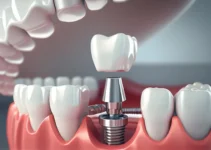The endometrial lining plays a crucial role in successful implantation and pregnancy outcomes. Various factors can impact its quality, including hormonal balance, blood flow, lifestyle choices, and underlying medical conditions. Understanding these elements and implementing specific strategies to optimize endometrial health is essential for women trying to conceive naturally or through assisted reproductive technologies. From dietary modifications and exercise to medical interventions, there are multiple evidence-based approaches to improve endometrial receptivity and thickness.
Understanding Endometrial Quality
The endometrium plays a crucial role in reproductive success, serving as the vital interface between maternal tissue and the developing embryo. This specialized tissue undergoes dynamic changes throughout the menstrual cycle, preparing for potential pregnancy through a complex interplay of hormones and growth factors.
Research has demonstrated that endometrial quality directly impacts implantation rates and pregnancy outcomes. A receptive endometrium requires optimal thickness, proper blood flow, and the presence of specific molecular markers that facilitate successful embryo attachment and development.
Modern fertility treatments increasingly focus on endometrial conditioning, with innovative approaches like PRGF-Endoret® showing promising results in improving endometrial thickness and receptivity. Studies indicate that this treatment can enhance endometrial thickness by up to 33%, significantly improving the chances of successful embryo implantation.
Definition and Importance
Endometrial quality refers to the structural and functional competence of the uterine lining to support embryo implantation and maintain pregnancy. This encompasses various parameters including thickness, pattern, blood flow, and molecular composition. The importance of optimal endometrial quality cannot be overstated, as it affects multiple aspects of reproduction:
- Embryo implantation success rates
- Early pregnancy maintenance
- Placental development
- Overall pregnancy outcomes
Recent studies with PRGF-Endoret® have shown remarkable improvements in endometrial conditioning through various mechanisms, including increased fibroblast proliferation and enhanced angiogenesis through VEGF expression stimulation.
Normal Endometrial Measurements
During a typical menstrual cycle, the endometrium undergoes significant changes in thickness and appearance. The optimal endometrial thickness varies by cycle phase:
- Early follicular phase: 3-4 mm
- Mid-cycle (ovulation): 8-12 mm
- Implantation window: 7-14 mm (ideal range)
Modern imaging techniques reveal that a triple-line pattern in the endometrium during the pre-ovulatory phase is considered optimal for implantation. This pattern, combined with adequate thickness, significantly improves pregnancy prospects.
Treatment with PRGF-Endoret® has demonstrated the ability to improve these measurements, particularly in cases where traditional methods have shown limited success. The treatment works by reducing scarring tissue and protecting against excessive fibrosis, creating an optimal environment for embryo implantation.
If you found this information helpful, we encourage you to explore our related articles on fertility treatments, implantation success factors, and innovative reproductive technologies. Understanding these crucial aspects of fertility can help you make informed decisions about your reproductive journey.
Key Factors Affecting Endometrial Quality
The endometrium, the inner lining of the uterus, plays a crucial role in successful embryo implantation. Understanding the key factors that influence endometrial quality is essential for optimizing reproductive outcomes. Recent studies have shown that endometrial thickness and receptivity are influenced by multiple interconnected factors.
Research demonstrates that PRGF-Endoret® technology has emerged as a groundbreaking advancement in endometrial conditioning. This innovative treatment has shown the ability to increase endometrial thickness by up to 33%, primarily through its capacity to stimulate fibroblast proliferation and enhance tissue regeneration.
The quality of the endometrial environment is determined by complex biological mechanisms, including angiogenesis and tissue remodeling. Studies have confirmed that PRGF treatment significantly promotes the expression of VEGF, leading to improved vascularization and reduced formation of scar tissue.
Hormonal Influences
Estrogen and Progesterone Impact
Hormonal balance plays a fundamental role in endometrial development. Estrogen and progesterone work synergistically to prepare the endometrium for potential implantation. Estrogen primarily promotes endometrial proliferation and vascularization, while progesterone triggers secretory changes essential for implantation. Research has shown that PRGF-Endoret® works in harmony with these natural hormonal processes, enhancing their effectiveness through the release of growth factors that support endometrial development. This treatment has demonstrated particular success in cases where traditional hormone therapy alone has proved insufficient.
Medical Conditions
Common Pathologies
Several medical conditions can significantly impact endometrial quality. The most common include:
- Endometrial fibrosis
- Thin endometrium syndrome
- Asherman’s syndrome
- Chronic endometritis
PRGF-Endoret® has shown remarkable effectiveness in addressing these conditions, particularly in reducing scarring and preventing excessive fibrosis. The treatment’s ability to promote natural tissue regeneration makes it especially valuable in cases of endometrial damage.
Lifestyle Factors
Diet and Exercise
Lifestyle choices significantly influence endometrial health and receptivity. A balanced diet rich in antioxidants and essential nutrients supports optimal endometrial development. Regular moderate exercise has been shown to improve blood flow to the uterus, enhancing endometrial quality.
When combined with lifestyle modifications, PRGF-Endoret® treatment has demonstrated enhanced effectiveness. The treatment’s ability to stimulate endometrial fibroblast proliferation and motility is complemented by healthy lifestyle choices that support optimal reproductive health.
If you found this information helpful, we encourage you to explore our other articles on reproductive health and advanced fertility treatments. Understanding the various factors affecting endometrial quality is crucial for achieving optimal reproductive outcomes, and staying informed about innovative treatments like PRGF-Endoret® can make a significant difference in your fertility journey.
Methods to Improve Endometrial Quality
Enhancing endometrial quality is crucial for successful embryo implantation and maintaining a healthy pregnancy. Modern reproductive medicine offers various evidence-based approaches to improve endometrial receptivity and thickness. One of the most promising advances is the use of PRGF-Endoret®, which has shown remarkable results in increasing endometrial thickness by up to 33%.
The key to successful endometrial enhancement lies in combining different therapeutic approaches. Scientific research has demonstrated that a comprehensive treatment plan should address multiple aspects, including blood flow improvement, tissue regeneration, and hormonal balance. Recent studies highlight the importance of personalized treatment protocols based on individual patient characteristics.
Medical Interventions
Medical interventions represent the cornerstone of endometrial quality enhancement. Advanced treatments like PRGF-Endoret® work by stimulating endometrial fibroblast proliferation and mobility, while simultaneously promoting angiogenesis through increased VEGF expression. This dual action helps create an optimal environment for embryo implantation.
Another significant advantage of modern medical interventions is their ability to reduce scarring and protect against excessive fibrosis. This is particularly important for patients with previous uterine procedures or endometrial damage.
Hormone Therapy
Hormone therapy plays a vital role in endometrial preparation. The most common approaches include:
- Estrogen supplementation to promote endometrial growth
- Progesterone support for endometrial receptivity
- Combined hormone protocols for optimal results
- Specialized treatments for specific hormonal imbalances
Treatment duration and dosage are carefully monitored through regular ultrasound examinations and blood tests to ensure optimal endometrial response.
Natural Enhancement Methods
Complementary to medical interventions, natural methods can significantly contribute to endometrial health. These approaches focus on improving overall reproductive health through lifestyle modifications and natural therapies.
Key natural enhancement strategies include:
- Regular moderate exercise to improve uterine blood flow
- Stress reduction techniques
- Adequate hydration
- Optimal sleep patterns
- Fertility-focused acupuncture
Dietary Supplements
Scientific research supports the use of specific supplements for endometrial health. The most beneficial supplements include:
- Vitamin E for improved blood flow
- L-arginine for enhanced vascular function
- Omega-3 fatty acids for reduced inflammation
- Iron supplements for optimal blood supply
If you found this information helpful, we encourage you to explore our other articles on reproductive health, including detailed guides on fertility optimization and pregnancy preparation. Understanding the various aspects of reproductive health can significantly improve your chances of successful conception and pregnancy.
Monitoring and Assessment
Monitoring endometrial quality is a crucial aspect of reproductive medicine that directly impacts the success rates of both natural conception and assisted reproductive techniques. Modern medical protocols emphasize the importance of systematic evaluation throughout the menstrual cycle to ensure optimal conditions for embryo implantation.
The assessment process typically involves a combination of different approaches, including regular monitoring of hormonal levels and endometrial thickness. PRGF-Endoret® technology has shown promising results in improving endometrial quality, with studies indicating up to a 33% increase in endometrial thickness after treatment.
Diagnostic Tools
Contemporary reproductive medicine employs various sophisticated diagnostic tools to evaluate endometrial quality. These methods provide comprehensive insights into the uterine environment and help identify potential issues that might affect fertility. The most commonly used diagnostic tools include:
- Transvaginal ultrasound imaging
- Hormonal blood tests
- Endometrial biopsy
- Hysteroscopy
- 3D ultrasound technology
Advanced treatments like PRGF-Endoret® have revolutionized endometrial conditioning by promoting fibroblast proliferation and enhancing angiogenesis through increased VEGF expression. This technology has shown significant success in reducing scarring tissue and protecting against excessive fibrosis.
Ultrasound Evaluation
Ultrasound evaluation serves as the primary diagnostic tool for assessing endometrial quality. This non-invasive technique allows practitioners to measure endometrial thickness, evaluate tissue patterns, and assess vascularization. The optimal endometrial pattern typically displays a distinctive triple-line appearance, which is considered ideal for implantation.
Modern ultrasound technology can detect subtle changes in endometrial thickness and texture, particularly important when monitoring the effects of treatments like PRGF-Endoret®. Studies have shown that this treatment can significantly improve endometrial quality by stimulating natural growth factors and promoting tissue regeneration.
If you found this information helpful, we encourage you to explore our other articles about reproductive medicine, particularly those focusing on innovative treatments and technological advances in fertility care. Understanding these aspects is crucial for anyone interested in reproductive health and assisted reproduction techniques.
Essential Factors for Optimal Endometrial Quality
Understanding how to improve endometrial quality is crucial for successful embryo implantation. Here’s what you need to know about enhancing uterine lining thickness and quality using advanced treatments like PRGF-Endoret®.
How does PRGF-Endoret® treatment improve endometrial quality for embryo implantation?
PRGF-Endoret® is an innovative treatment that can increase endometrial thickness by up to 33%. It works by stimulating endometrial fibroblast proliferation and enhancing cell motility. The treatment promotes angiogenesis through increased VEGF expression, which improves blood flow to the endometrium. Additionally, it helps reduce scar tissue formation and protects against excessive fibrosis, creating a more receptive environment for embryo implantation. This comprehensive approach makes it a promising option for patients struggling with thin endometrial lining or implantation issues.




